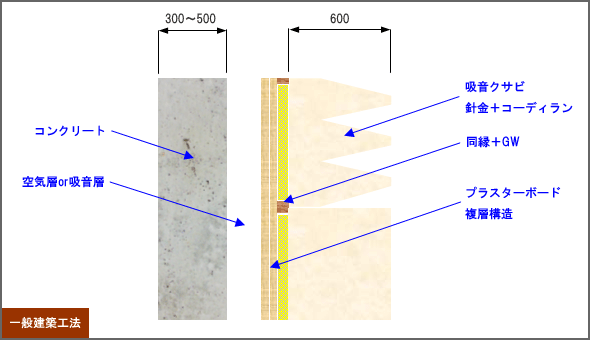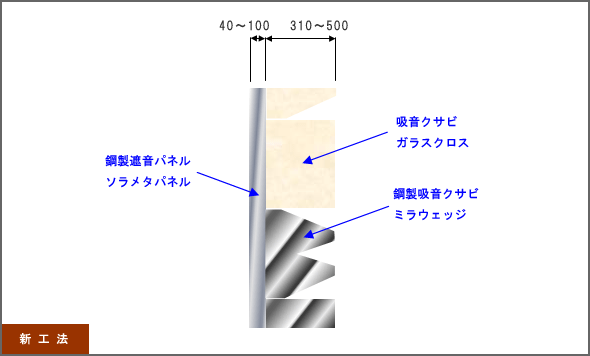Towards the Future of Anechoic Chambers! Updating Outdated Construction Methods

Time to Transition to Modern Construction Methods for Anechoic Chambers!
For over 30 years, anechoic chambers have been constructed using traditional methods involving concrete, gypsum board, suspended ceilings, and glass wool. However, these methods come with significant drawbacks:
Problems with Traditional Methods:
- High Costs: Construction expenses are exorbitant.
- Prolonged Construction Periods: On-site work takes an excessively long time.
- Inefficient Space Usage: Thick walls and ceilings occupy unnecessary space.
- Outdated Technology: No updates for over 30 years.
- Fragility: Coated fabric materials are flammable, and acoustic wedges are easily damaged by impact.
- Excessive Weight: Materials like concrete are far too heavy.
To overcome these inefficiencies, we are introducing a “New Construction Method for Anechoic Chambers.”
Advantages of the New Method:
Compact and Efficient Soundproof Layers
In Japan, space constraints are a major concern. Many factories and research facilities have limited room for anechoic chambers and often require relocation. This makes designs that are space-saving and easy to assemble or dismantle essential.
Steel soundproof panels deliver exceptional soundproofing performance despite their thinness and are easy to install and relocate. Unlike traditional anechoic chambers, which require costly demolition and rebuilding, this approach significantly reduces expenses. In today’s era, thinness is a testament to advanced manufacturing technology.


- Innovation in Absorption Layers The largest space-consuming element in anechoic chambers is the acoustic wedge. By reducing its thickness, the effective measurement area can be expanded, and costs can be reduced. Particularly, perforated metal is widely used in Europe and the US for its high strength and superior protection of the absorption layer.
Perforated metal is generally criticized for reflecting high-frequency sound, but designs to prevent reflected noise are also possible. In fact, European manufacturers have developed and marketed anechoic chambers with absorption layers half the thickness of traditional wedges, while maintaining or exceeding their performance.
The Future of Anechoic Chambers Lies in “Compact + High Performance”
Anechoic chambers are evolving to meet modern demands. With thinner, stronger, next-generation designs, you can minimize costs and space usage while maximizing performance.
